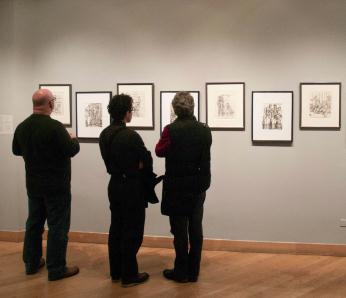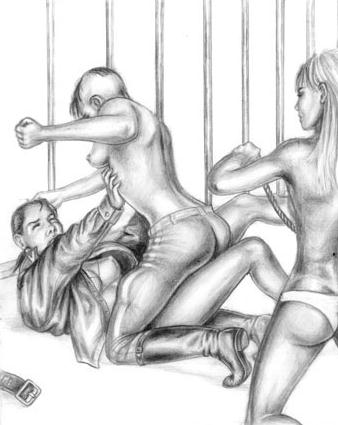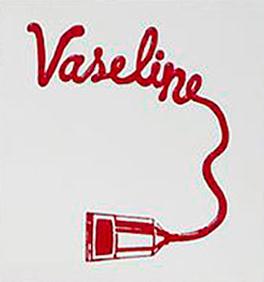
Opening night saw dozens of Canadians milling about at Raw & Rare. Credit: Aaron Leaf

GB Jones's Prison Breakout #6, 1991 graphite on paper. Credit: Aaron Leaf
Despite the cold night, the opening party of Rare & Raw at the Leslie Lohman Museum of Gay and Lesbian Art spilled onto the streets of SoHo in lower Manhattan Feb 15. Much of the crowd was in town for the College Art Association’s Annual Conference, whose Queer Caucus is one of the show’s sponsors. This meant dozens of Canadians milling about, including Rare & Raw’s Toronto-based curators, Steph Rogerson and Kelly McCray.
Inside, Tom of Finland’s 1987 sketches of jailhouse sex between powerful guards and their prisoners hang beside sketches from Canadian artist GB Jones, whose lesbian erotica takes its cues from Finland’s work but is set in an all-female world. While Tom of Finland’s images fethishize power, domination and masculinity, Jones’s world is more horizontal, with complicated relationships between prisoners, their captors and the bars meant to constrain them.
Rare & Raw, says McCray, is an attempt to “pair different artists to help contextualize and create a dialogue between what they’re doing.” Tom of Finland and GB Jones’s work is the jumping-off point for this intergenerational conversation. The most arresting pairing, however, is of the late Will Munro’s 2005 Blank Generation — a series of mirrors with the bright-pink logos of seminal queer dance clubs silkscreened into the foreground — with Los Angeles artist William E Jones’s Tearoom, video footage from a 1962 police sting operation targeting gay sex in public bathrooms.
Munro’s work, McCray says, is all about “celebrating, no shame, putting everything out there.” Exhibited beside the grainy footage of surreptitious encounters whose subjects were later incarcerated, it takes on a powerful political message. The juxtaposition is both disturbing and uplifting. Glimpsing one’s own image in Munro’s mirrors forces the viewer to confront his or her part in the dialogue.
Zoe Leonard’s The Fae Richards Photo Archive is a wall of black and white photographs, weathered from age and handling, that document the life of a queer black actress, spanning the first eight decades of the 20th century. Except it’s fiction. Richards is a kind of composite character, the artifacts of her life telling a story of romance, heartbreak and social exclusion.
Similarly, in a series of sepia-toned period photographs, The Emergence of a Legend, Canadian First Nations artist Ken Monkman has photographed himself in the style of 19th-century ethnographic photographs, but as his alter ego, Miss Chief Eagle Testickle, an eroticized version of the Wild West show with sparkles and heels and chiefly headdresses.
McCray, the cofounder of artbarrage.com, and Rogerson, a PhD candidate at Ryerson, first worked together five years ago on In Tents City, a show held during the AIDS conference in Toronto. For that exhibit, 35 international artists projected their work onto tents.
They’ve been working on Rare & Raw for three years now, beginning with a night at InterAccess where they screened films from the early 20th century that contained groundbreaking sexuality.
“That was a really historical night,” McCray says, “and we really wanted to bridge gaps: how are contemporary artists looking at the past and how are they bringing it forward?”
When the original space in Los Angeles fell through, Rare & Raw moved to the Leslie Lohman Museum in New York. It wasn’t a conscious decision, McCray says, to present Canadian art to Americans — the show is a mix of artists from different places. Nor was it an attempt to make a statement in the New York art scene. They happened to pitch their show to the gallery just as their mandate was shifting toward a “more progressive direction.” It was a very personal process of collaboration between the two, McCray says, each bringing different things to the project.
Rogerson and McCray hope to bring a version of Rare & Raw to Toronto as part of WorldPride in 2014.

 Why you can trust Xtra
Why you can trust Xtra


